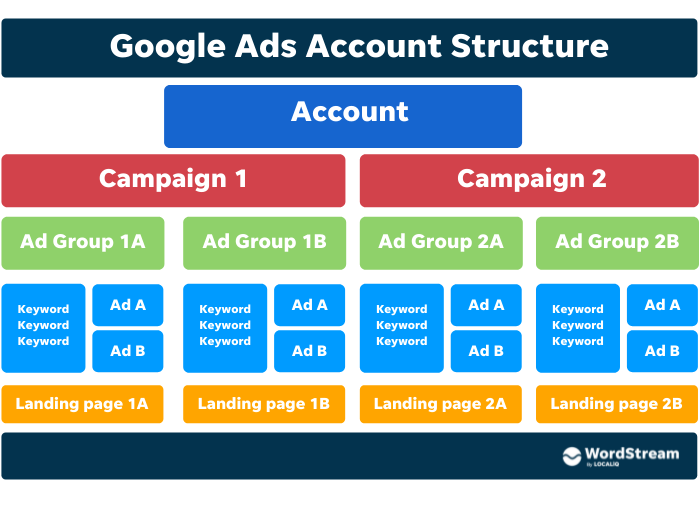To optimize Google Ads for mobile, focus on key strategies like creating mobile-friendly landing pages and utilizing responsive ad formats. Smartphone usage has surged in recent years, making it crucial for businesses to optimize their Google Ads to reach mobile users effectively.
With the majority of searches happening on smartphones, it is essential to prioritize mobile-friendly strategies. One key strategy is creating landing pages specifically designed for mobile devices, ensuring seamless navigation and load times. Another effective approach is utilizing responsive ad formats that automatically adjust to fit different screen sizes.
By implementing these strategies, businesses can effectively reach smartphone users, improve their ad visibility, and enhance overall campaign performance.

Credit: www.upwork.com
Understanding The Importance Of Mobile Marketing
Mobile marketing is crucial in reaching smartphone users. By optimizing Google Ads for mobile, businesses can effectively engage with their target audience and drive conversions. Implementing key strategies like mobile-friendly designs, location targeting, and click-to-call options can help businesses maximize their reach and impact in the mobile space.
The Rise Of Mobile Internet Usage
The rise of mobile internet usage has completely transformed the way people interact with online content. With the increasing popularity of smartphones, consumers are now spending more time on their mobile devices than ever before. In fact, recent studies indicate that mobile devices account for more than 50% of global web page views. This massive shift in consumer behavior has made mobile marketing an essential component of any successful online advertising strategy.
Benefits Of Mobile Marketing
Mobile marketing offers numerous benefits that can help businesses connect with their target audience in a more meaningful way. Here are a few key advantages:
- 1. Increased Reach: By optimizing your Google Ads for mobile, you can reach a much larger audience of smartphone users who are constantly on the go. This allows you to tap into new markets and expand your customer base.
- 2. Higher Engagement: Mobile devices provide a more intimate and personal user experience. With mobile marketing, you can create highly engaging ad formats that capture the attention of smartphone users and encourage interaction.
- 3. Enhanced Targeting: Mobile advertising platforms, such as Google Ads, offer advanced targeting options that allow you to reach specific demographics, locations, and interests. This enables you to deliver more relevant ads to your target audience and increase the chances of conversion.
- 4. Seamless Integration: Mobile marketing seamlessly integrates with other digital channels, such as social media and email marketing. By adopting a multi-channel approach, you can create a consistent brand experience for your audience across different devices and platforms.
- 5. Real-Time Tracking: Mobile advertising platforms provide real-time data and analytics, allowing you to monitor the performance of your ads and make informed optimizations. This level of tracking and transparency ensures that your marketing efforts are efficient and yield the desired results.
In conclusion, understanding the importance of mobile marketing is crucial for businesses looking to stay competitive in the digital landscape. The rise of mobile internet usage presents a vast opportunity to reach smartphone users and maximize the impact of your Google Ads campaign. By optimizing your ads for mobile devices and leveraging the benefits offered by mobile marketing, you can effectively engage with your target audience and drive meaningful results for your business.
Overview Of Google Ads For Smartphone Users
As the majority of internet users now rely on smartphones for their online activities, it has become imperative for businesses to optimize their Google Ads campaigns to effectively reach this mobile audience. Understanding the unique characteristics of mobile devices and harnessing the key features of Google Ads for mobile is essential for a successful advertising strategy. In this blog post, we will delve into the important subheading: Overview of Google Ads for Smartphone Users.
Introduction To Google Ads
Google Ads, formerly known as Google AdWords, is a powerful advertising platform offered by Google. With Google Ads, businesses can create and display targeted advertisements on various online platforms, including search results, websites, and mobile apps. It offers a range of ad formats and targeting options to help businesses connect with potential customers in a relevant and effective manner.
Why Focus On Smartphone Users?
Smartphone usage has skyrocketed in recent years, with more and more people relying on their mobile devices for various tasks, from browsing the web to shopping online. In fact, studies show that more than 50% of all internet traffic comes from mobile devices. This shift in consumer behavior highlights the importance of focusing on smartphone users when it comes to running Google Ads campaigns. By targeting this growing demographic, businesses can tap into a vast pool of potential customers, boost their brand visibility, and drive conversions.
Key Features Of Google Ads For Mobile
Google Ads offers several features specifically designed for mobile advertising, enabling businesses to reach smartphone users effectively. These features include:
| Feature | Description |
|---|---|
| Responsive Search Ads | A format that automatically adjusts the size and appearance of ads to fit different screen sizes, optimizing the user experience. |
| Mobile-specific Ad Extensions | Add-ons that provide additional information, such as click-to-call buttons, location information, and app downloads, designed specifically for mobile users. |
| Mobile Bid Adjustments | The ability to adjust bids specifically for mobile devices, allowing businesses to allocate their budget in a way that maximizes their exposure to smartphone users. |
| Call-Only Ads | Ad formats that prominently display a phone number, encouraging users to directly call the business, perfect for driving phone inquiries and conversions. |
By leveraging these key features, businesses can optimize their Google Ads campaigns for mobile, ensuring they reach smartphone users with relevant and compelling advertisements. This strategic approach can lead to higher click-through rates, improved conversions, and ultimately, a stronger return on investment.
Optimizing Google Ads For Smartphone Users
Smartphones have become an integral part of our daily lives, with more and more people relying on their handheld devices for various tasks. This shift in consumer behavior presents a massive opportunity for businesses to optimize their Google Ads campaigns specifically for smartphone users. In this article, we will explore key strategies for optimizing Google Ads for smartphone users, with a focus on responsive design and mobile-friendly websites, optimizing ad copy for mobile, mobile-specific ad extensions, leveraging ad targeting options for mobile users, and tracking and analyzing mobile performance.
Responsive Design And Mobile-friendly Websites
One of the foundational elements of optimizing Google Ads for smartphone users is ensuring that your website has a responsive design and is mobile-friendly. A responsive design enables your website to adapt and provide an optimal user experience across different screen sizes and resolutions. This means that your website will look and function seamlessly on smartphones, tablets, and desktop computers.
To create a mobile-friendly website, consider the following:
- Ensure that your website loads quickly on mobile devices. Slow load times can lead to higher bounce rates and negatively impact the user experience.
- Optimize the design and layout of your website for smaller screens. Utilize a clean and intuitive design, easy-to-read fonts, and appropriate spacing and button sizes.
- Make sure that your website is touch-friendly. This means that buttons and elements should be easily clickable on a smartphone screen, without accidentally tapping neighboring elements.
Optimizing Ad Copy For Mobile
When it comes to creating ad copy for mobile, it’s essential to keep it concise, compelling, and easy to read on a smaller screen. Mobile users have shorter attention spans and are more likely to skim through content. Therefore, your ad copy should quickly grab their attention and convey the key message effectively.
Consider the following tips for optimizing ad copy for mobile:
- Use catchy headlines that highlight the most enticing aspect of your offer. Bold keywords or phrases that emphasize the value proposition.
- Keep the ad copy concise and focus on the benefits or solutions that your product or service offers. Avoid using industry jargon or complex language.
- Include a strong call-to-action that encourages users to take immediate action, such as “Call Now,” “Shop Now,” or “Learn More.”
Mobile-specific Ad Extensions
Ad extensions are additional pieces of information that you can add to your Google Ads, enhancing their visibility and providing more value to the users. For mobile-specific ads, consider using mobile-specific ad extensions that are tailored to smartphone users.
Here are a few mobile-specific ad extensions to consider:
- Click-to-call extensions allow users to call your business directly from the ad by simply tapping the phone number. This can significantly increase phone inquiries and conversions.
- Location extensions display your business’s address and appear alongside your ad, making it easier for mobile users to find your physical store or office.
- App extensions promote your mobile app by including a direct link to the app store where users can download your app.
Leveraging Ad Targeting Options For Mobile Users
Google Ads provides various targeting options that allow you to reach specific segments of mobile users. By leveraging these targeting options effectively, you can ensure that your ads are seen by the most relevant audience.
Consider the following ad targeting options for mobile users:
- Device targeting allows you to specifically target smartphone users, ensuring that your ads are displayed only on mobile devices.
- Location targeting enables you to target users based on their geographical location. This can be particularly useful for businesses with a physical presence, as you can target users within a specific radius of your store or office.
- Demographic targeting allows you to target users based on their age, gender, and other demographic characteristics. This can help you tailor your ads to the specific preferences and needs of different mobile user segments.
Tracking And Analyzing Mobile Performance
Tracking and analyzing the performance of your Google Ads campaigns on mobile devices is crucial to understanding the effectiveness of your mobile optimization strategies. By monitoring key metrics and analyzing the data, you can identify areas for improvement and make informed decisions to optimize your mobile advertising efforts.
Consider the following tips for tracking and analyzing mobile performance:
- Use Google Ads’ mobile reporting feature to gain insights into how your ads are performing on different mobile devices, operating systems, and networks.
- Track conversion rates and other relevant metrics specific to mobile devices to evaluate the effectiveness of your mobile campaigns.
- Regularly analyze the data and make data-driven optimizations to maximize the performance of your mobile ads.

Credit: www.singlegrain.com

Credit: appsamurai.com
Frequently Asked Questions For Optimizing Google Ads For Mobile: Key Strategies For Reaching Smartphone Users
How Do I Target Mobile Users On Google Ads?
To target mobile users on Google Ads, follow these steps: 1. Optimize your ads for mobile devices to ensure they’re visually appealing and user-friendly on small screens. 2. Use mobile-specific ad extensions like click-to-call and app downloads to enhance engagement. 3.
Leverage mobile-specific targeting options such as “Mobile devices with full browsers” to reach mobile users only. 4. Monitor and adjust your bids specifically for mobile devices to maximize your mobile advertising impact. 5. Analyze and optimize your ads based on mobile user behavior data to improve campaign performance.
How Do I Optimize Google Ads On My Phone?
To optimize Google Ads on your phone, follow these steps: 1. Download and install the Google Ads app on your mobile device. 2. Use the app to access your Google Ads account, campaigns, and ad groups. 3. Monitor performance, adjust bids, and optimize keywords and ad text.
4. Utilize the app’s recommendations and notifications to improve campaign performance. 5. Regularly review and analyze data to make informed decisions and optimize your Google Ads on the go.
What Is The Most Important Thing To Consider When Optimizing For Mobile?
The most important consideration when optimizing for mobile is ensuring a responsive design. This means that your website or app adapts to different screen sizes and resolutions, providing a seamless browsing experience for mobile users. Responsive design improves usability and helps retain visitors, ultimately boosting mobile search rankings.
How Do I Optimize Google Smart Ads?
To optimize Google Smart ads, follow these guidelines: 1. Conduct thorough keyword research and incorporate relevant keywords in your ad content. 2. Create enticing and compelling ad headlines and descriptions that grab users’ attention. 3. Continuously monitor and analyze your ad performance using Google Ads’ data and make necessary adjustments to improve results.
4. Utilize various ad formats provided by Google Smart ads to maximize your reach and engagement. 5. Test different ad variations and optimize your bidding strategy based on the performance metrics provided.
Conclusion
Optimizing Google Ads for mobile is crucial for effectively reaching smartphone users. By utilizing key strategies such as mobile-friendly ad formats, targeted keywords, and optimized landing pages, businesses can enhance their visibility and engagement on mobile devices. Keeping up with the changing digital landscape and staying ahead of competitors is essential in today’s mobile-driven world.
Remember to continuously monitor and refine your mobile ads to ensure maximum performance and results.


